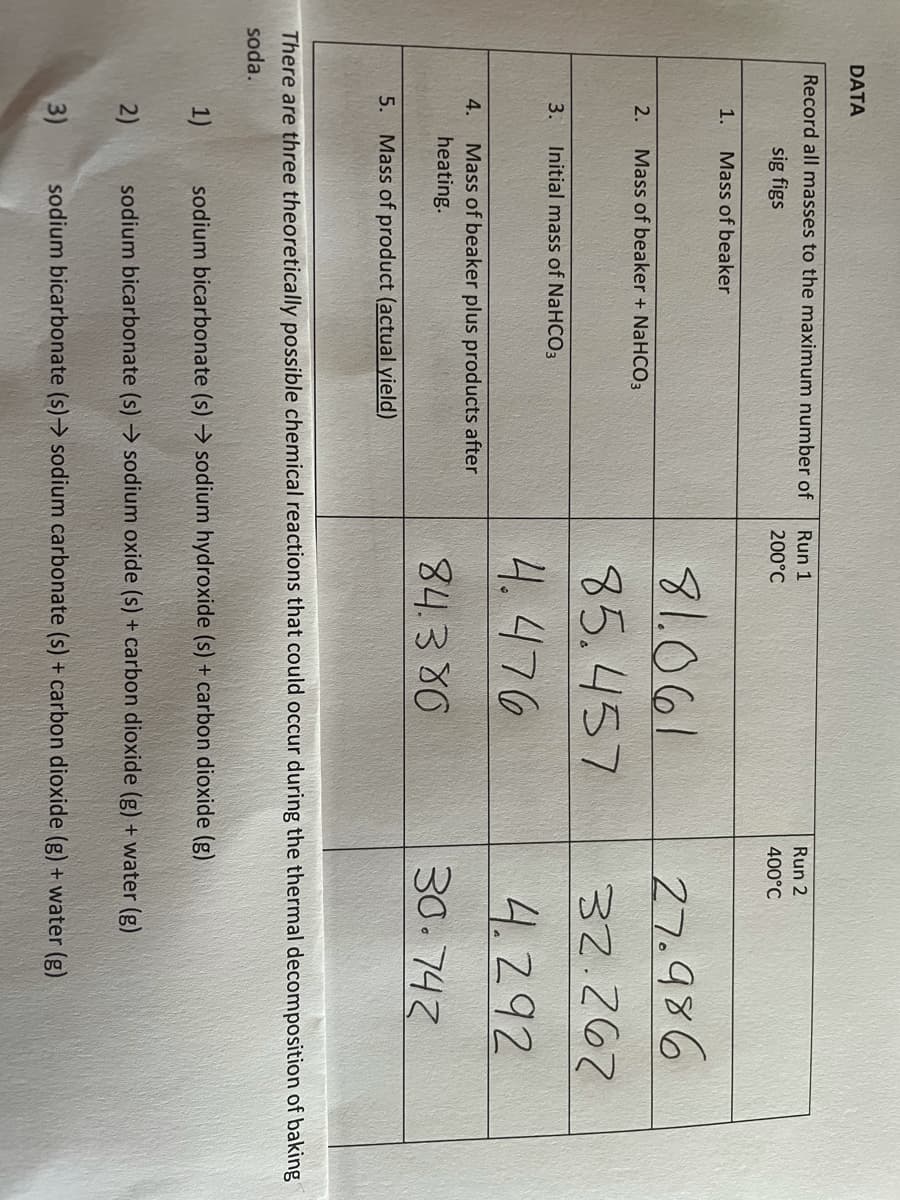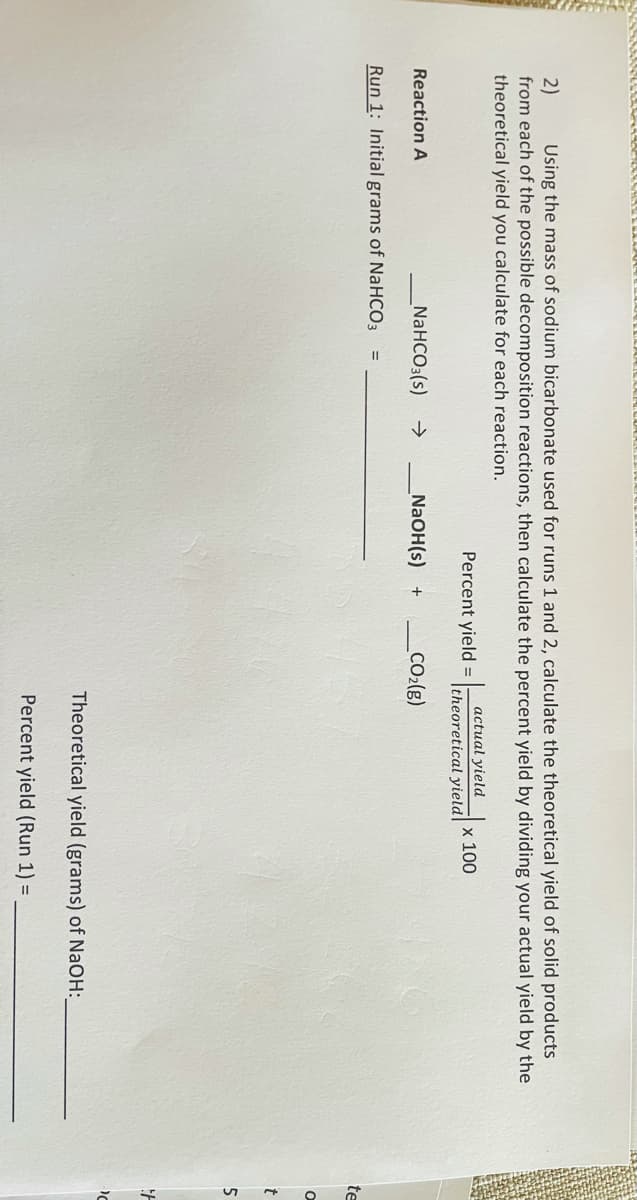Record all masses to the maximum number of Run 1 Run 2 sig figs 200°C 400°C 1. Mass of beaker 81.061 27.986 2. Mass of beaker + NaHCO3 85.457 32.267 3. Initial mass of NaHCO3 4.476 4.292 Mass of beaker plus products after heating. 4. 84.3 80 30.742 5. Mass of product (actual yield) There are three theoretically possible chemical reactions that could occur during the thermal decomposition of baking soda. 1) sodium bicarbonate (s) → sodium hydroxide (s) + carbon dioxide (g) 2) sodium bicarbonate (s) → sodium oxide (s) + carbon dioxide (g) + water (g) 3) sodium bicarbonate (s)→ sodium carbonate (s) + carbon dioxide (g) + water (g)
Record all masses to the maximum number of Run 1 Run 2 sig figs 200°C 400°C 1. Mass of beaker 81.061 27.986 2. Mass of beaker + NaHCO3 85.457 32.267 3. Initial mass of NaHCO3 4.476 4.292 Mass of beaker plus products after heating. 4. 84.3 80 30.742 5. Mass of product (actual yield) There are three theoretically possible chemical reactions that could occur during the thermal decomposition of baking soda. 1) sodium bicarbonate (s) → sodium hydroxide (s) + carbon dioxide (g) 2) sodium bicarbonate (s) → sodium oxide (s) + carbon dioxide (g) + water (g) 3) sodium bicarbonate (s)→ sodium carbonate (s) + carbon dioxide (g) + water (g)
Chemistry: Principles and Practice
3rd Edition
ISBN:9780534420123
Author:Daniel L. Reger, Scott R. Goode, David W. Ball, Edward Mercer
Publisher:Daniel L. Reger, Scott R. Goode, David W. Ball, Edward Mercer
Chapter5: Thermochemistry
Section: Chapter Questions
Problem 5.101QE: In the 1880s, Frederick Trouton noted that the enthalpy of vaporization of 1 mol pure liquid is...
Related questions
Question

Transcribed Image Text:DATA
Record all masses to the maximum number of
Run 1
Run 2
sig figs
200°C
400°C
1.
Mass of beaker
81.061
27.986
2.
Mass of beaker + NaHCO3
85.457
32.267
3.
Initial mass of NaHCO3
4.476
4.292
Mass of beaker plus products after
heating.
4.
84.3 80
30.742
5.
Mass of product (actual yield)
There are three theoretically possible chemical reactions that could occur during the thermal decomposition of baking
soda.
1)
sodium bicarbonate (s) → sodium hydroxide (s) + carbon dioxide (g)
2)
sodium bicarbonate (s) → sodium oxide (s) + carbon dioxide (g) + water (g)
3)
sodium bicarbonate (s)→ sodium carbonate (s) + carbon dioxide (g) + water (g)

Transcribed Image Text:2)
from each of the possible decomposition reactions, then calculate the percent yield by dividing your actual yield by the
theoretical yield you calculate for each reaction.
Using the mass of sodium bicarbonate used for runs 1 and 2, calculate the theoretical yield of solid products
Percent yield =
actual yield
Itheoretical yield
x 100
Reaction A
_NaHCO3(s)
->
NaOH(s)
_CO2(g)
+
Run 1: Initial grams of NaHCO3
te
5
Theoretical yield (grams) of NaOH:
Percent yield (Run 1) =
Expert Solution
This question has been solved!
Explore an expertly crafted, step-by-step solution for a thorough understanding of key concepts.
This is a popular solution!
Trending now
This is a popular solution!
Step by step
Solved in 3 steps with 3 images

Knowledge Booster
Learn more about
Need a deep-dive on the concept behind this application? Look no further. Learn more about this topic, chemistry and related others by exploring similar questions and additional content below.Recommended textbooks for you

Chemistry: Principles and Practice
Chemistry
ISBN:
9780534420123
Author:
Daniel L. Reger, Scott R. Goode, David W. Ball, Edward Mercer
Publisher:
Cengage Learning

Chemistry: Principles and Practice
Chemistry
ISBN:
9780534420123
Author:
Daniel L. Reger, Scott R. Goode, David W. Ball, Edward Mercer
Publisher:
Cengage Learning